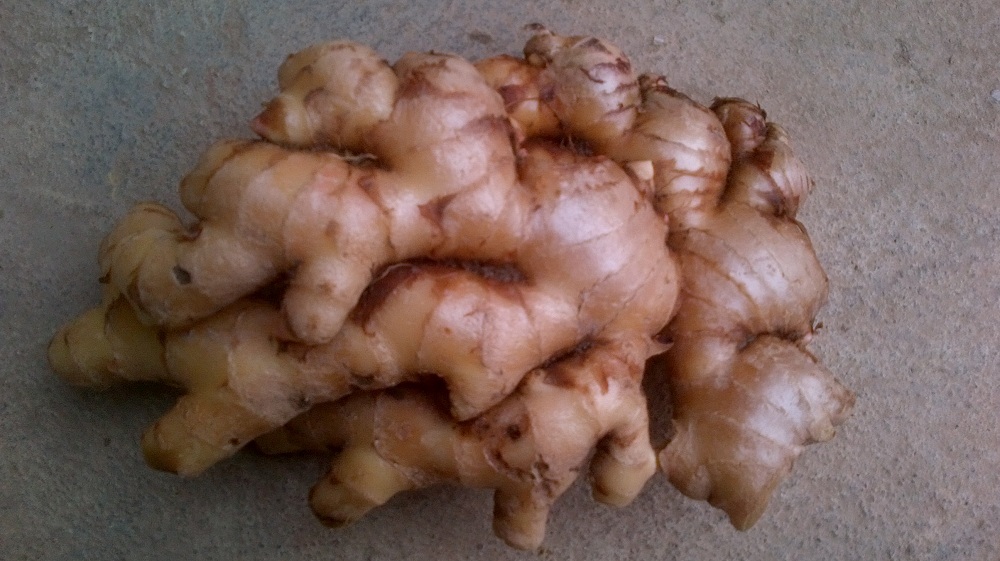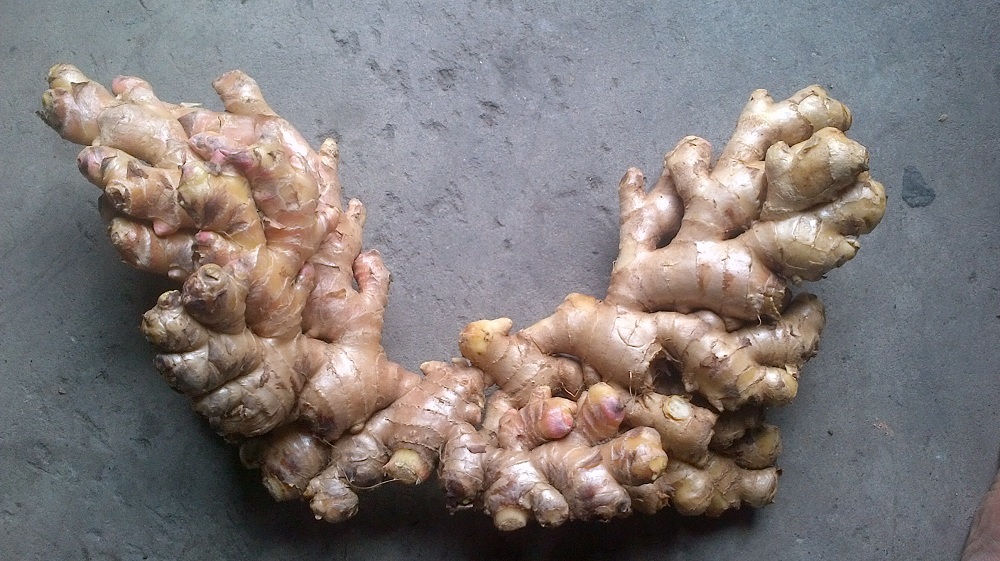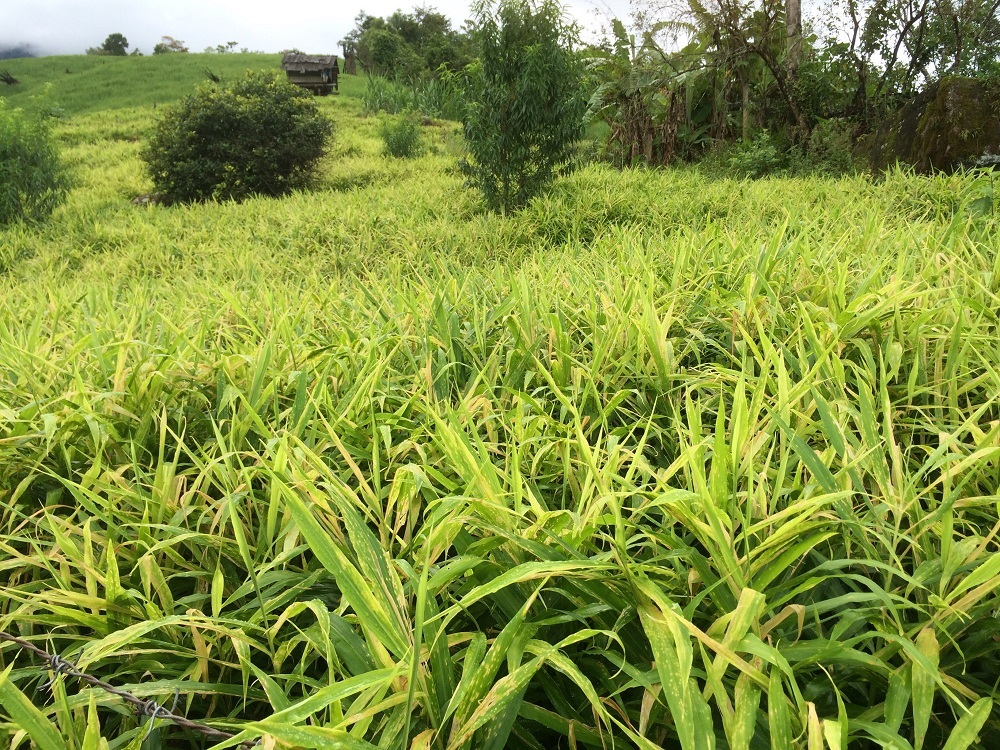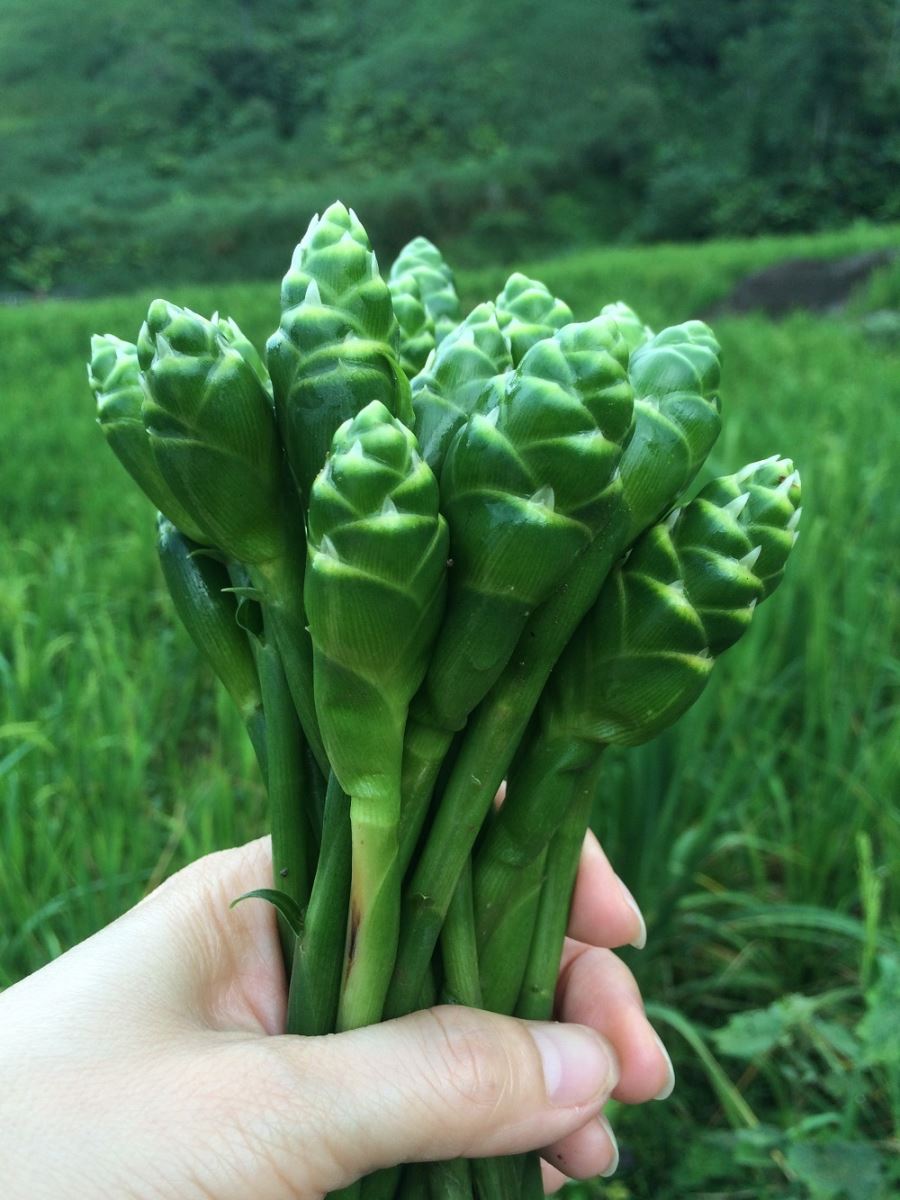Ginger’s scientific name is Zingiber officinale Rose. According to Eastern medicinal theory, ginger has spicy taste, its property warm, good for lungs, spleen and stomach. It is usually used to cure cold and stimulate digestion. Ginger is cultivated in many places and used as spice and medicinal herb. In Nghệ An, ginger has been cultivated for generations in the mountainous district of Kỳ Sơn, mainly in the communes of Mường Lống, Mường Típ, Nậm Càn, Bảo Thắng, Huồi Tụ, Mường Ải, Đoọc Mạy, Na Ngoi, Tây Sơn, Bắc Lý, etc. where the H’mông ethnic people live. Since hundreds of years ago, ginger has been cultivated by the local H’Mông ethics. Thanks to its superior quality, the ginger here is highly favoured by consumers from Banglades, India, Pakistan and Central Asia countries such as Uzbekistan, Turkmenistan and Kazakhstan.
In Kỳ Sơn, local farmers produce two types of ginger, which are “dé” and “trâu” ginger. “Dé” ginger is mainly consumed domestically while “trâu” ginger aims for export market. “Kỳ Sơn” ginger can be used to make essential oil, spice, condiment, medicine, food, etc.

Picture 1: Kỳ Sơn ginger

Picture 2: Kỳ Sơn ginger
“Kỳ Sơn” ginger has specific appearance and quality that differentiate it with gingers from other areas. Kỳ Sơn “dé” ginger is small with round body and many branches. The skin and flesh have ivory colour, the core has faint yellow colour and rich in fibre. It has the specific strong spicy aroma. The water content is 91.09 % to 92,61 %, gingerol is 1.85 % to 3.33 % of dry matter, sugar content is 1.16 % to 1.27 %, protein content is 1.52 % to 1.87 %, fibre content is 0.81 % to 0.91 %, essential oil content is 3.52 % to 8.31 % of dry matter. Kỳ Sơn “trâu” ginger is big with round body and low number of branches. he skin and flesh have ivory colour, the core has faint yellow colour and low in fibre. It has its specific aroma, and strong spicy taste. The water content is 91.06 % to 93.66 %, gingerol is 1.45 % to 2.34 % of dry matter, sugar content is 1.13 % to 1.25 %, protein content is 1.50 % to 1.62 %, fibre content is 0.70 % to 0.79 %, essential oil content is 3.16 % to 4.12 % of dry matter. Researches show that gingerol and essential oil contents are the peculiar characteristics of Kỳ Sơn ginger.
Kỳ Sơn ginger is cultivated in the communes of Na Ngoi, Bảo Thắng, Đoọc Mạy, Mường Lống, Huồi Tụ, Tây Sơn, Nậm Cắn, Nậm Càn, Mường Ải, Mường Típ, Keng Đu, Na Loi, Bắc Lý, Mỹ Lý and Bảo Nam. The primary topography of the area is high mountain with the altitude of 700m, wavy and difficult to access, and a high average inclination of 35°. The area is misty throughout the year with cool climate. The average temperature is 20°C to 25 °C, and high humidity. The climate has two distinct seasons which are rainy season and dry season. The annual average rainfall is 1,500mm to 2,000mm, average humidty is 83%, total evaporation is 900mm to 1,100mm.

Picture 3: Ginger field in Na Ngoi commune

Picture 4: Kỳ Sơn ginger flower
The soil in Kỳ Sơn has the moisture of 23% - 29%, average density of 2,42 - 2,49g/cm3, pHKCL level of 4.21 - 5.10, pHH2O level of 4.92 - 5.78, The soil is rich in humus, the total organic carbon content is 2.48 - 3.40%, total Nitrogen content is 0.24 - 0.31%, total Phosphorus content is 0.15 - 0.26%. The peculiarity of Kỳ Sơn ginger is thanks to the content of Molybdenum, Copper, Zinc, total Nitrogen, total Phosphorus, total Potassium, soluble Potassium, acidic level, and clay in the soil. The total Potassium and soluble Potassium contents are especially important to the formulation of Gingerol and essential oil contents in the ginger.
Along with the natural conditions, the experience and knowhows of the producers also shape the quality and peculiarity of the product. At the beginning, the producers will choose firm, mature bulbs of 10 to 11 months old (neither too young nor too old) with shiny appearance to be the parent plant. They will also pick the suitable season with the misty nature of the area’s climate, regularly fertilize the root for better plant development or apply non-fertilize method for two to three years. Also, ginger producers of Kỳ Sơn district abide to the technical procedure for producing safe organic ginger. All these knowhows have resulted in the peculiarity of Kỳ Sơn ginger, winning the trust of consumers.